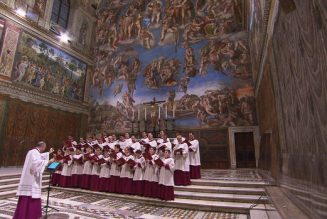By Dr. Jeff Mirus ( bio – articles – email ) | Oct 10, 2024
Having lived through quite a few synods over the past two generations, most of us are aware that, like all human meetings, they are opportunities for people to try to win approval for their own particular ideas of the best way forward in the situation faced by the institution in question, in this case the Church. And just as with most meetings, the individual participants have a variety of attitudes toward the past image and past policies of the organization they purport to represent. The result is that despite the actual necessity and even the (relatively rare) benefits of formalized meetings, they often spark the formation of factions, exacerbate conflicts, and waste more time in their process than they save later through sound decisions.
It is also true of meetings that they tend to make plain the divergent opinions of the various members of the group, providing an opportunity to identify some participants who are actually attempting to subvert the purposes of the organization as it is understood by other participants. In most organizations, this can lead to serious quarrels, through which the nature and purposes of an organization may well be changed. Many a business has been either rejuvenated or destroyed by such shifts in purpose, but the Church is a partial exception to the human impact of meetings because the Church’s fundamental identity is guaranteed by God Himself.
This reality explains why there is such an obvious continuity between the Church in one age and the Church in another age, and why—miraculously, actually—the Church has the same structure and teaches the same thing today as she did 2,000 years ago. Of course, there are always many who are purveying false teaching, and others who are arguing with them. But you won’t find this fundamental organizational stability anywhere else in the world, and it ought to alter the way we evaluate the fruitfulness of “meetings” in ecclesiastical affairs.
The Catholic difference
For every organization except the Catholic Church, effectiveness depends on not only implementing the mission in a way that works well but actually changing the mission to embrace goals that will be popular with those to whom the mission is directed. A manufacturer may change the line of products with which it is associated when the old products are not sparking sufficient interest. A media outlet may change the values it incorporates in its programming when the original values are no longer popular. A transportation conglomerate will alter its routes and in-transit services as the desired destinations and the expected levels of comfort shift over time.
Too many participants view the Church in the same way, as a merely human organization which must please the people to survive. But the Catholic Church has an unchanging structure, purpose, and set of “products”, none of which can be changed to suit swings in the predominating human interests and desires. So the only thing that meetings can accomplish in the Church is a superior focus on the God-given mission, a superior fidelity to that mission by the Church’s members, and a superior deployment of the available human resources to implement that mission more effectively in accordance with the “conditions on the ground”.
Typically the greatest obstacle to the Church’s success—at least in terms of the things the Church herself can control—is the failure of her ministers and members to be faithful to her God-given mission, either through a non-culpable confusion or a culpable stubbornness. But as noted above, it is also true that in each place and period the Church and her members must discern the most effective ways to organize and implement the various apostolic efforts so as to help the target audiences most fully and most effectively. The Church’s purpose is given by God and cannot change; it is to bring all who are willing into union with God through Jesus Christ. The Church’s teachings about this call to holy union cannot change; these are drawn from Scripture and Tradition with the aid of an infallible teaching authority guaranteed by Christ Himself. And the Church’s means of accomplishing this union do not change; the means are always acceptance of the Gospel, participation in sacramental grace, and ongoing conversion in Christ.
Thus what the Church most needs is what we might call effective stability. Her mission, her faith, her morals must be absolutely stable. But the particular forms of apostolate which she deploys in the service of her mission can change over time, as the situations in which people find themselves change in ways that demand new forms of apostolic response. Clearly the goals, purposes and fundamental methods of every single human organization on earth can change. But the Church is a Divine organization, whose goals and purposes and fundamental methods have been both established and guaranteed by God Himself.
In the context of this particular essay, let me put it another way: The purpose of meetings in every single human organization can be to change that organization’s goals and purpose and fundamental methods. But since the Church is a divine organization, her meetings, no matter how extensive or frequent, cannot be used to change the Church’s goals and purposes and fundamental methods.
Effective stability
The purpose of meetings in the Church, therefore, is radically different and radically restricted when compared with any other organization on earth. The result is that those who do not really accept the Divine character of the Church are forever attempting to couch their recommendations in ways that will undermine the Church’s Divine constitution.
Take for example our news story on October 4th, Synod study group calls for ‘paradigm shift’ on controversial moral issues. It ought to be clear to anyone with a third-grade education that the study group reported on here is attempting to slide off the edge of the Divinely-established nature of the Church. It is one thing to emphasize the need to address moral failures with sympathy and love for those who have fallen into them, but it is a deliberate caricature of the lived reality to suggest that “a vital, fruitful and reciprocal tension between doctrine and practice” somehow “embodies the living Tradition”, as if that Tradition admits either the fruitfulness of sin, or the positive value of sin in reshaping Catholic morality.
Does anyone really believe that today’s problem in the Church is “rigidity”, that the Church in Rome and around the world is so preoccupied with proclaiming the Truth that she never shows the slightest sympathy with human weakness? Is it not actually far more common for the Church’s ministers to claim “a vital, fruitful and reciprocal tension between doctrine and practice” to dilute the doctrine rather than to help the sinner to change the practice? This group’s recommendation illustrates one of my own rules of thumb (for the record, it is number 219-B):
Whenever human verbiage in the Church is subject to multiple interpretations, some of which are evil, it is evidence of an effort to re-open Pandora’s famous box so that the sinner can lose the last thing it contains, which is hope.
Our news coverage of the Synod is probably the most efficient to be found anywhere, not only in the daily summaries but in the particular stories on single items. But the essential fairness required in news reporting—which means we report what has occurred without pronouncing an immediate judgment upon it—leaves much for deliberation and judgment to supply. Therefore, while supplying it we must remember that the most distressing lesson on offer in the Church today is the lesson involving internal enemies who spread noxious seeds in God’s field. The saving grace is that while the Church can be injured, because of her humanity, she cannot die, because of her divinity.
For this reason, we may trust that despite all her human folly, the Church’s Divine character will remain visible. The age of synodality-as-revolution will pass, and a period of fruitful collaboration at all levels is more likely than ever to emerge through an honest response. Indeed, since the Church really does have a Divine constitution, the same principle may be stated this way: We may not know, but the Church’s Divine head really does know, that those who are not rooted in God are mere flowers and grass, blooming only for a season. It is as Isaiah the prophet foretold nearly 3,000 years ago:
The grass withers, the flower fades,
when the breath of the LORD blows upon it;
surely the people is grass.
The grass withers, the flower fades;
but the word of our God will stand for ever.
[Is 40:7-8]
Even when Peter is weak, we must always remember that Christ Himself is both the head and the spouse of the Church: Christ, whose breath is God’s breath; Christ, the very Word of God.
Sound Off! CatholicCulture.org supporters weigh in.
All comments are moderated. To lighten our editing burden, only current donors are allowed to Sound Off. If you are a current donor, log in to see the comment form; otherwise please support our work, and Sound Off!









